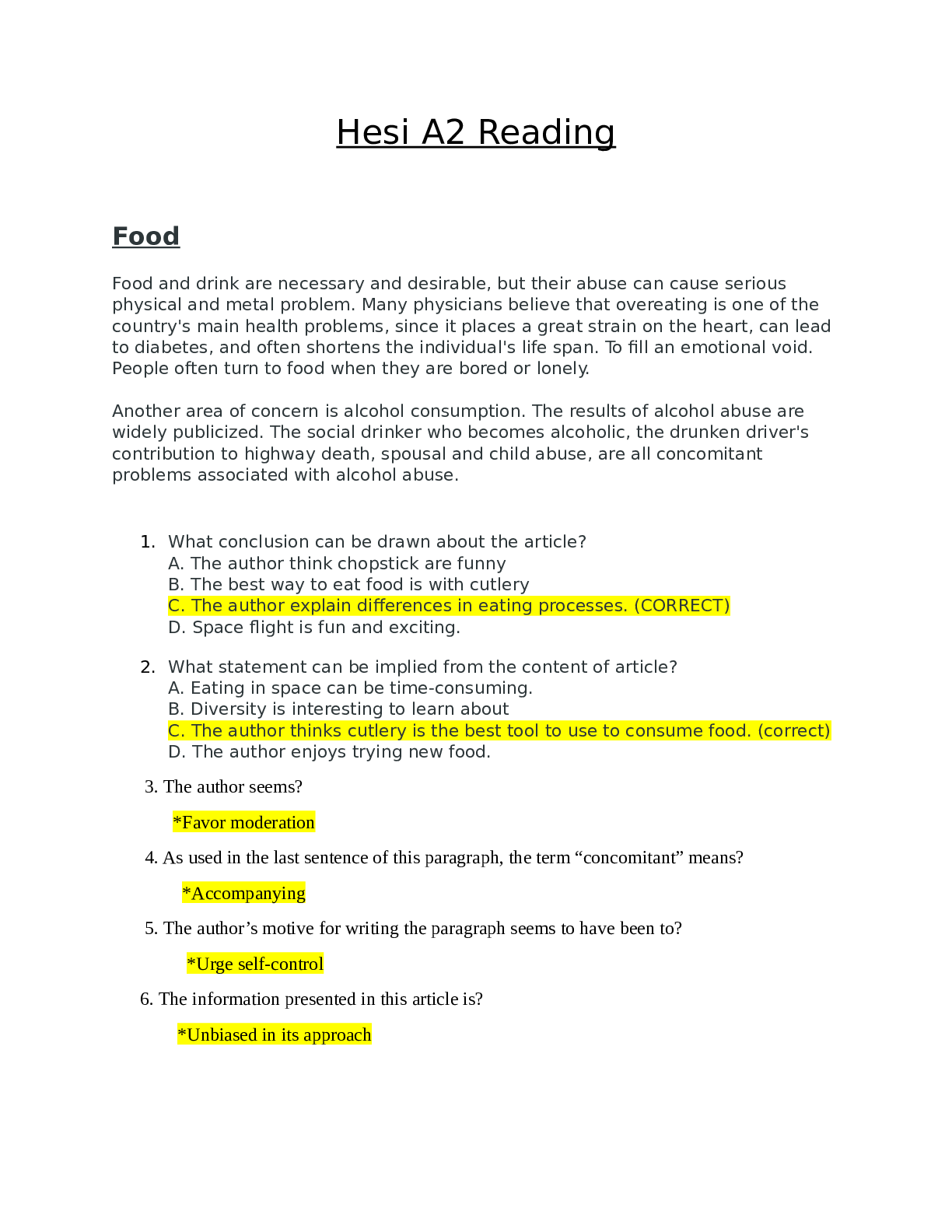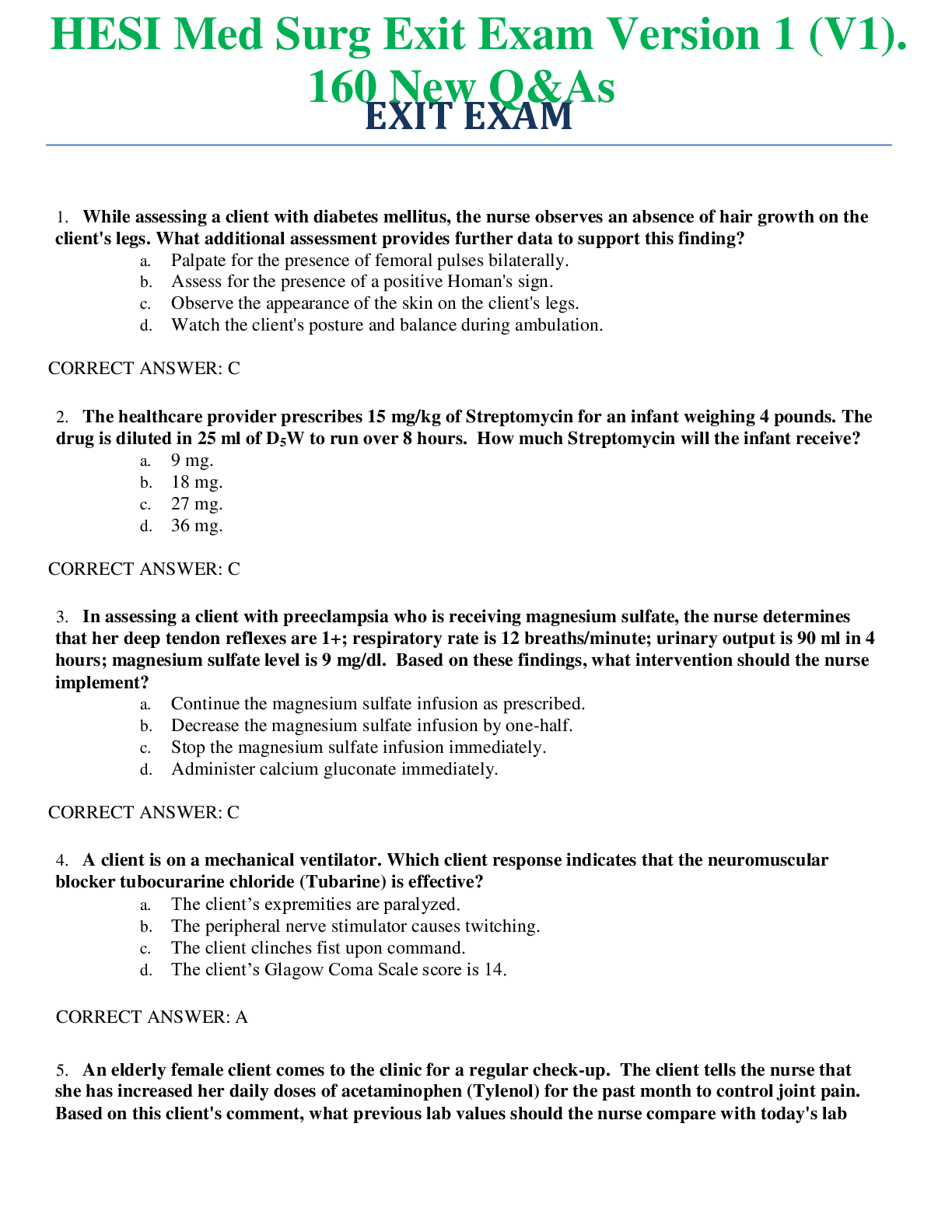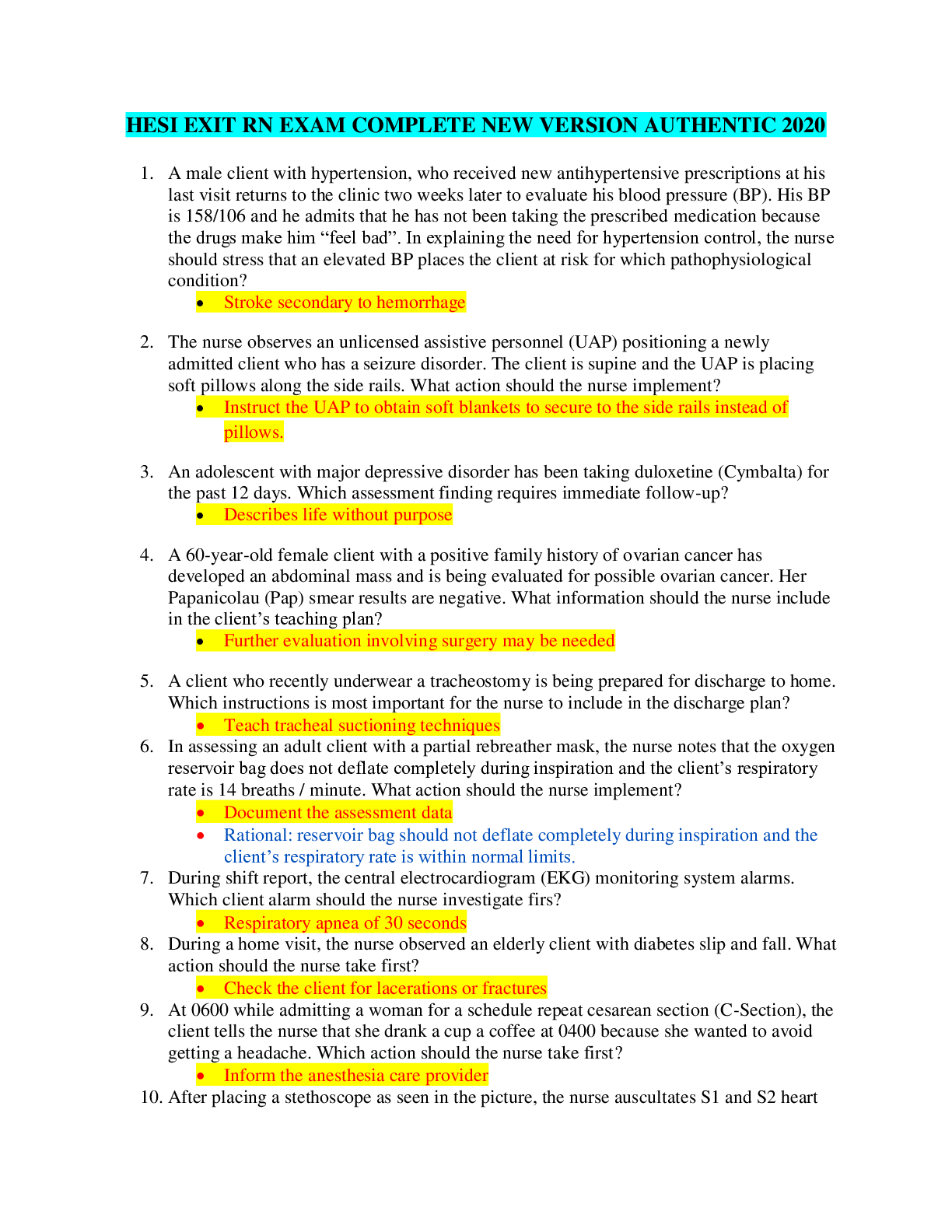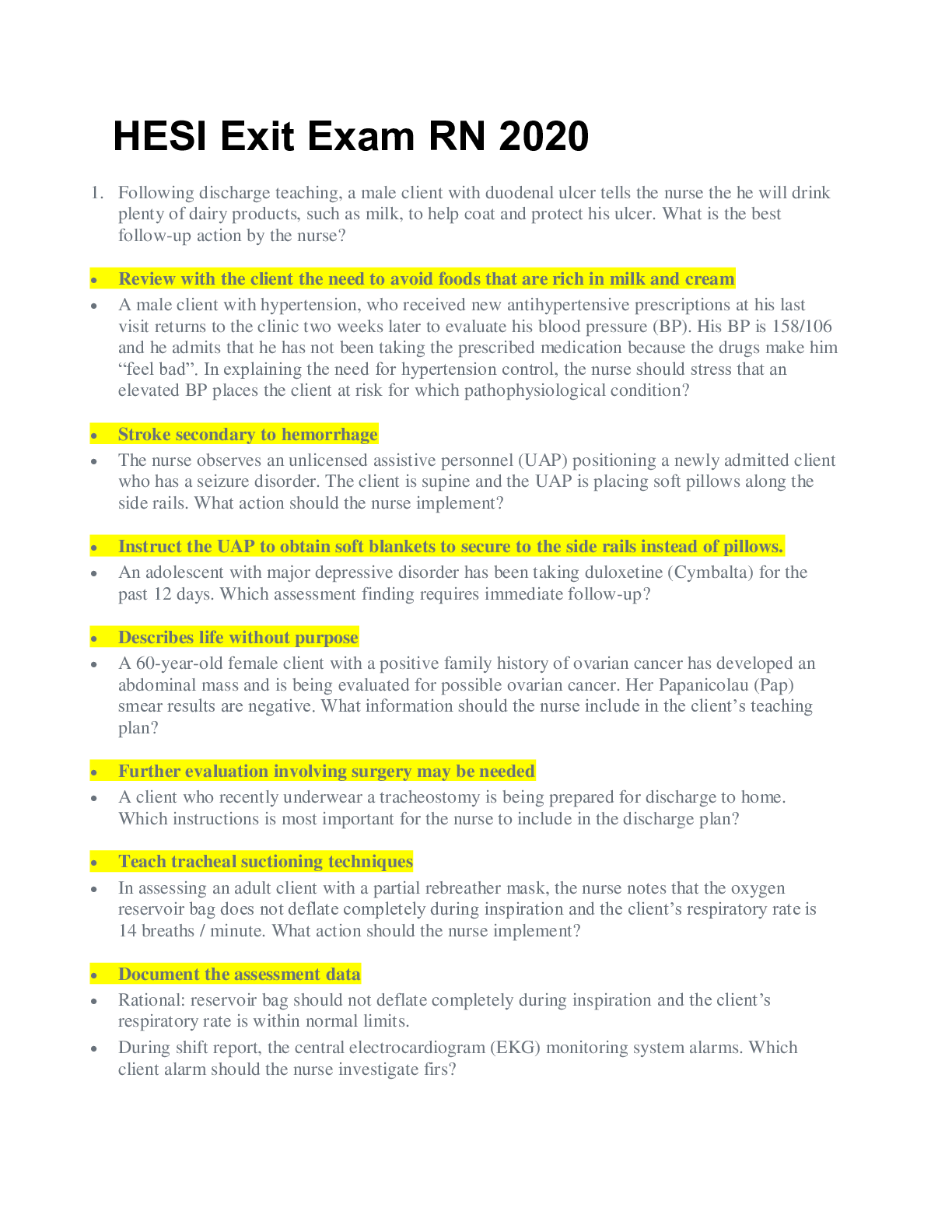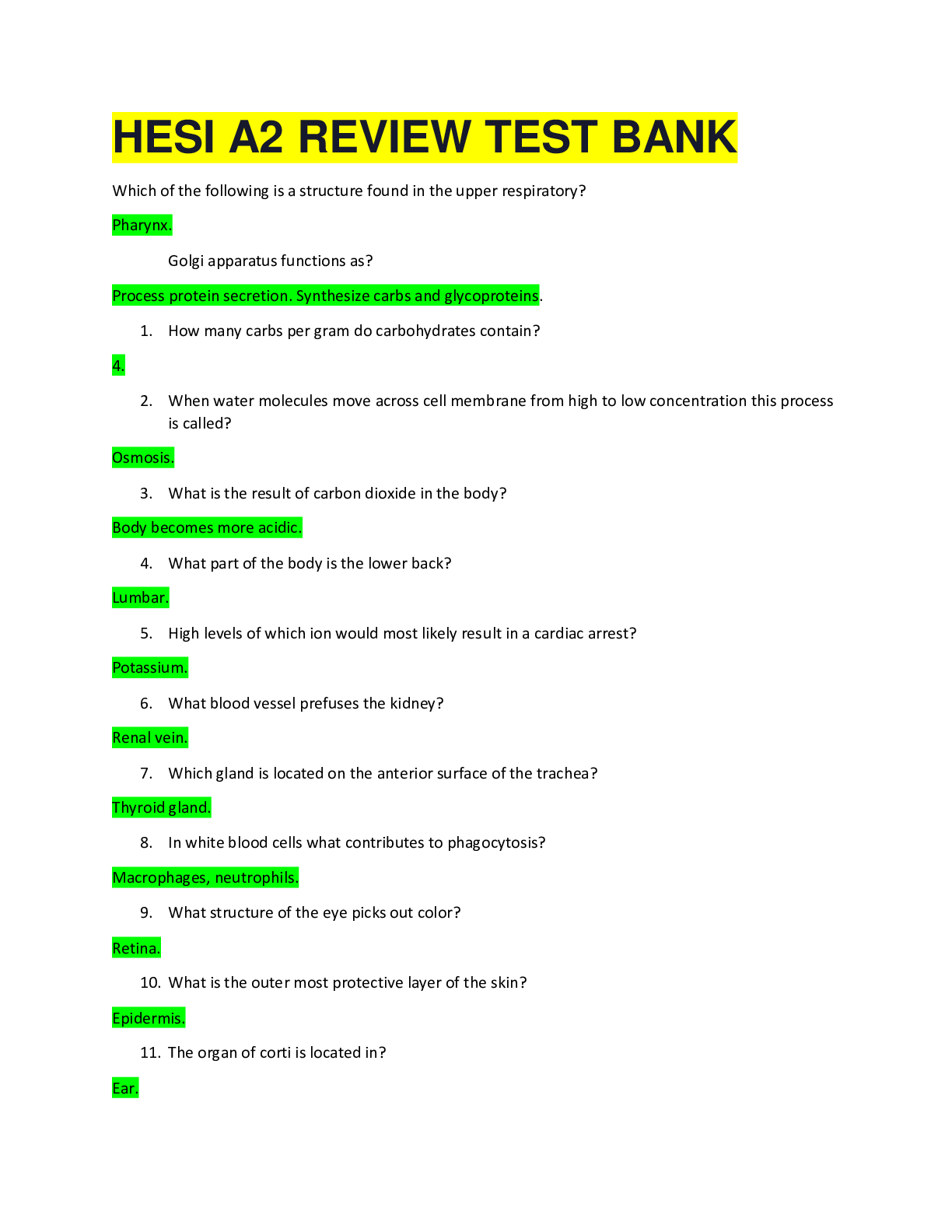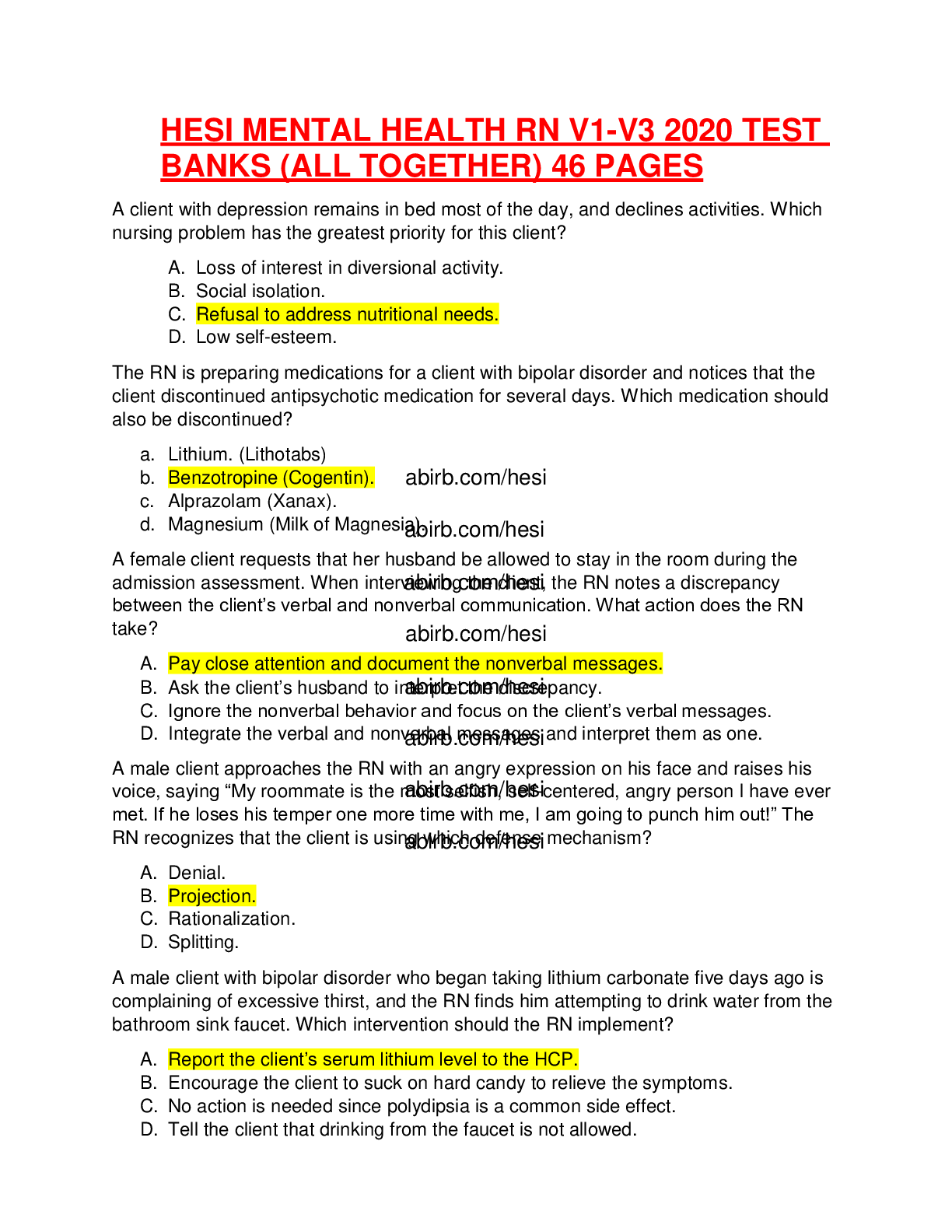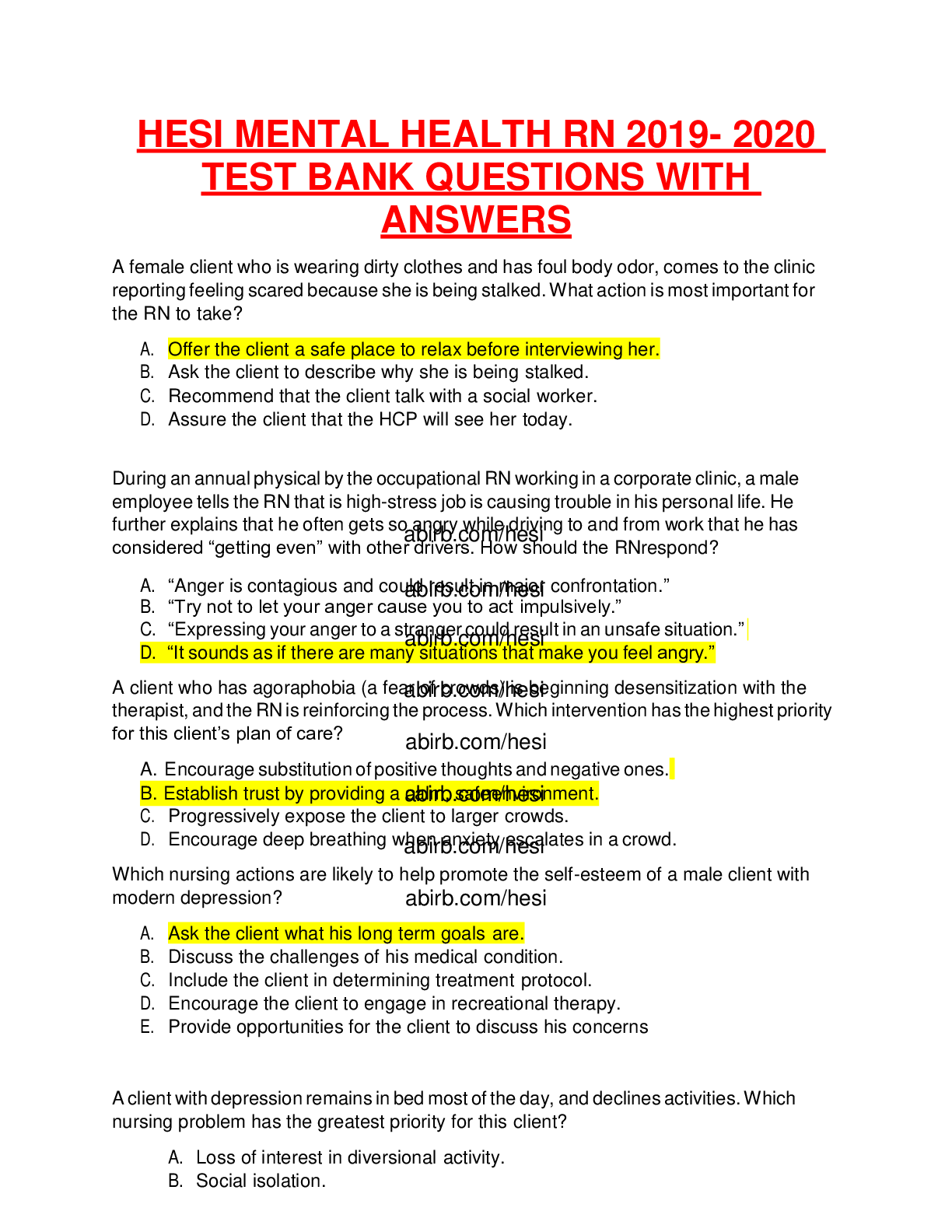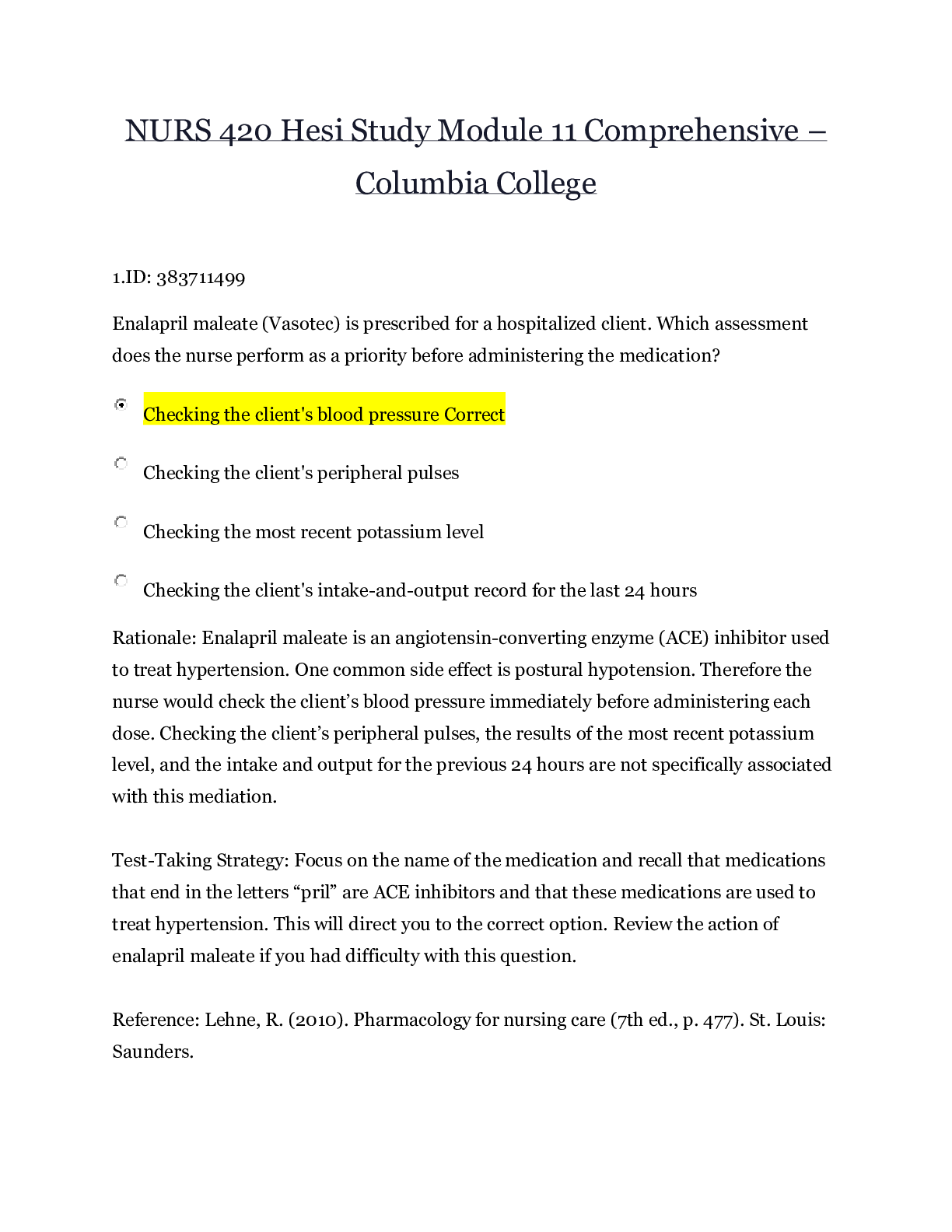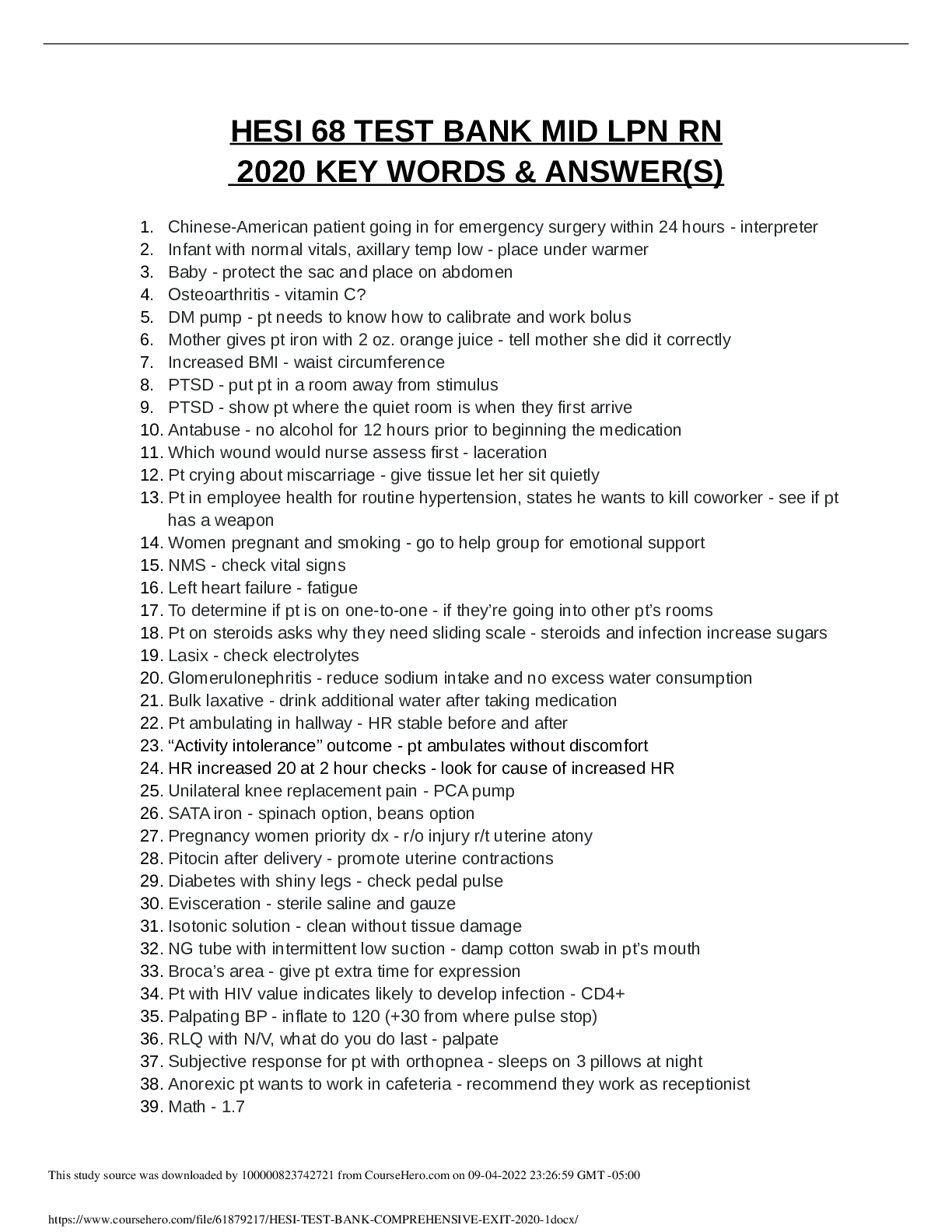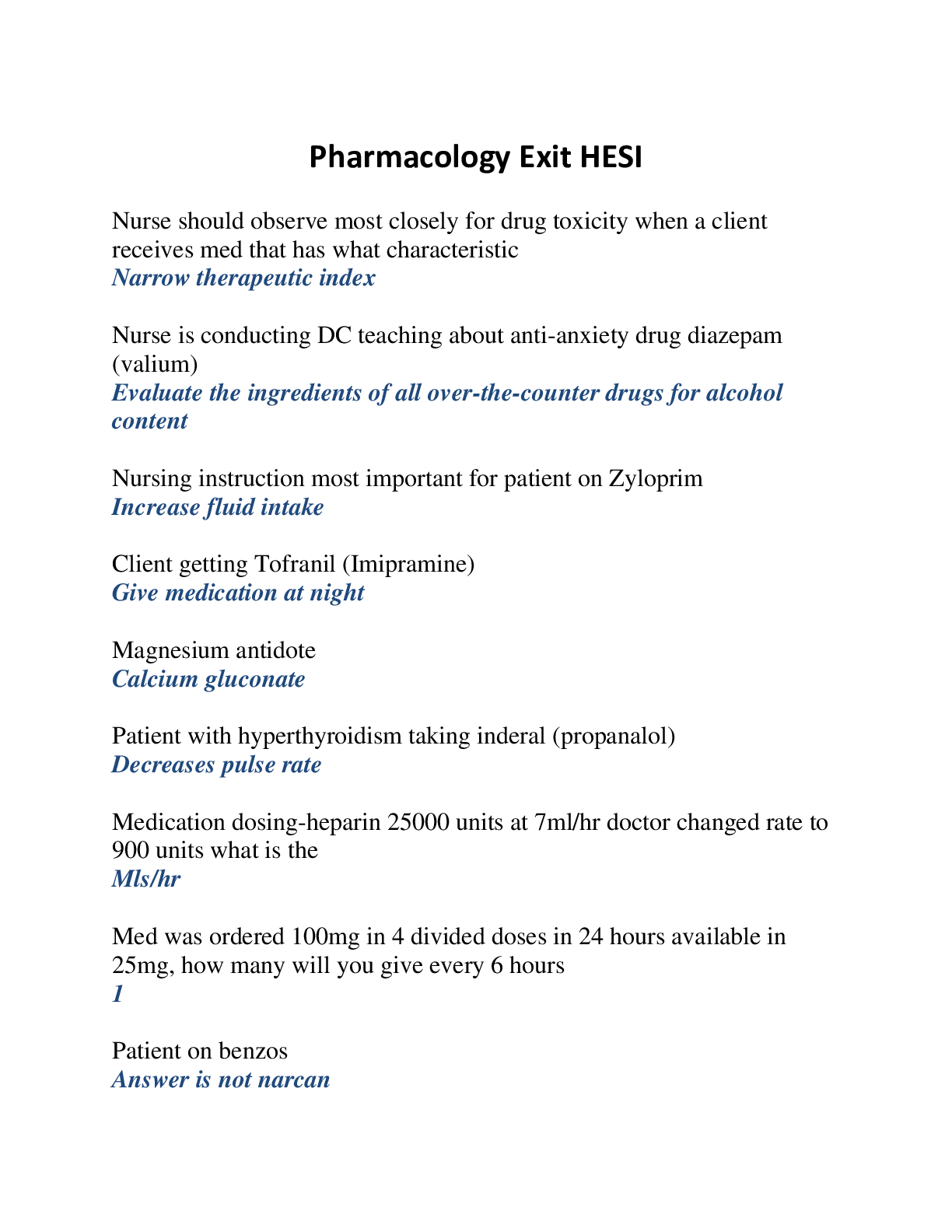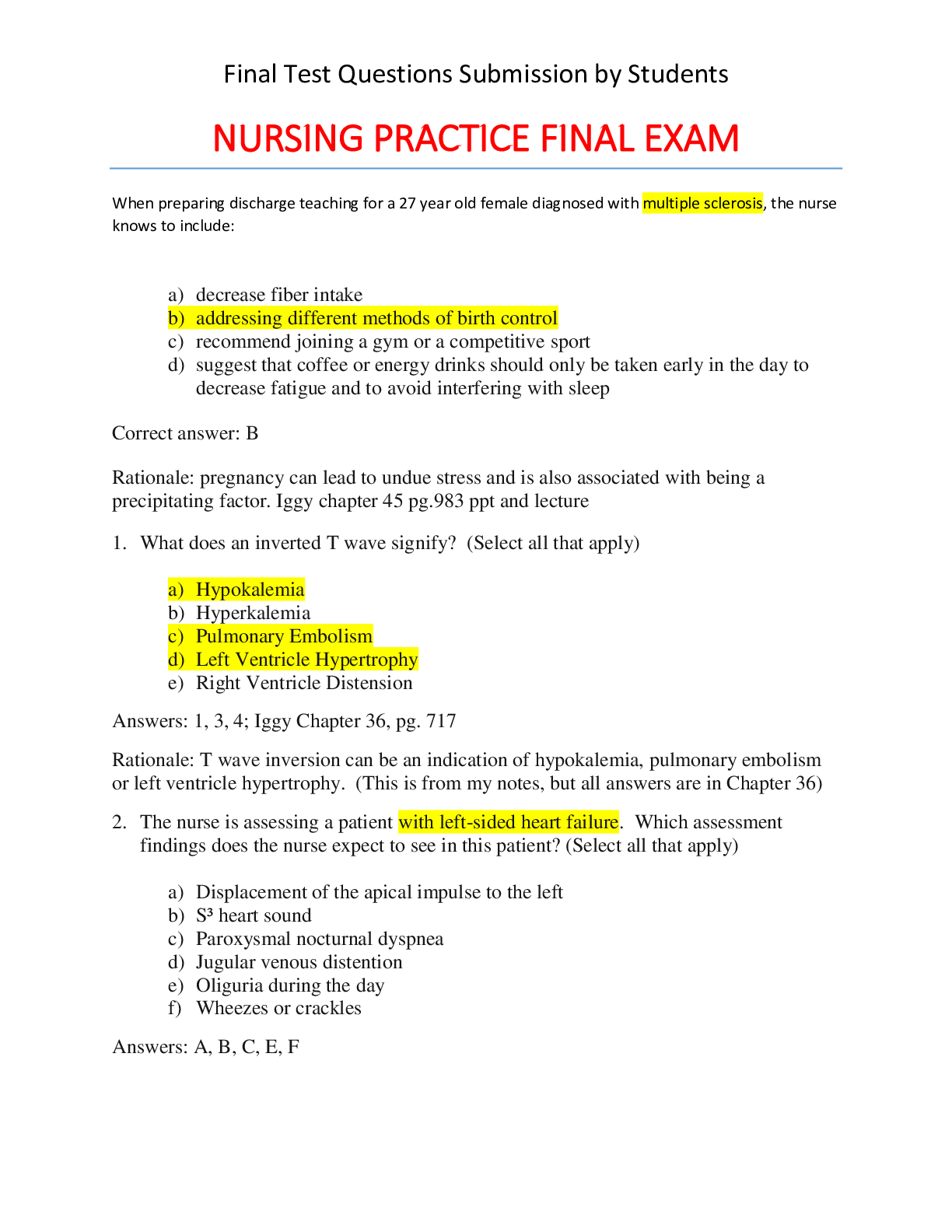Hesi Exam Pediatric II
Document Content and Description Below
The mother of a 4-year-old child asks the nurse what she can do to help her other children cope with their sibling's repeated hospitalizations. Which is the best response that the nurse should offe... r? Encourage the mother to have the children visit the hospitalized sibling When planning the care for a child who has had a cleft lip repair, the nurse knows that crying should be minimized because it a. D- Stresses the fracture. Prevention of stress on the lip suture line is essential for optimum healing and the cosmetic appearance of a cleft lip repair. Although crying causes (increased salvation, leads to vomiting, stresses the suture line) these conditions do not create a problem for the child with a cleft lip repair The nurse assigning care for a 5-year-old child with otitis media is concerned about the child's increasing temperature over the past 24 hours. Which statement is accurate and should be considered when planning care for the remainder of the shift? Tympanic and oral temperatures are equally accurate. A 2-year-old child with gastro-esophageal reflux has developed a fear of eating. What instruction should the nurse include in the parents' teaching plan? Consistently follow a set mealtime routine. What preoperative nursing intervention should be included in the plan of care for an infant with pyloric stenosis? Observe for projectile vomiting. The nurse is assessing a 2-year-old. What behavior indicates that the child's language development is within normal limits? Half of child's speech is understandable. The nurse receives a lab report stating a child with asthma has a theophylline level of 15 mcg/dl. What action will the nurse take? Pass the information on in the report. A 4-year-old girl continues to interrupt her mother during a routine clinic visit. The mother appears irritated with the child and asks the nurse, "Is this normal behavior for a child this age?" The nurse's response should be based on which information? Children need to retain a sense of initiative without impinging on the rights and privileges of others. A 6-month-old infant with congestive heart failure (CHF) is receiving digoxin elixir. Which observation by the nurse warrants immediate intervention? Apical heart rate of 60. Which restraint should be used for a toddler after a cleft palate repair? a. Elbow a.i. Elbow restraints prevent children from bending their arms and brining their hands to the oral surgical site, (A) restrains the hands but the child can bend and bring their head to their ands. (B) is used during procedures (mummy). (D)-jacket, restrains the body torso and is not appropriate When taking the health history of a child, the nurse knows that which finding is an early indication of hypothyroidism in children? Cessation of growth in a child that had been normal. The mother of a preschool-aged child asks the nurse if it is all right to administer Pepto Bismol to her son when he "has a tummy ache." After reminding the mother to check the label of all over-the-counter drugs for the presence of aspirin, which instruc Do not give if the child has chickenpox, the flu, or any other viral illness. Which growth and development characteristic should the nurse consider when monitoring the effects of a topical medication for an infant? A thin stratum corneum that increases topical absorption. The nurse is preparing a health teaching program for parents of toddlers and preschoolers and plans to include information about prevention of accidental poisonings. It is most important for the nurse to include which instruction? a. B- store all toxic agents and medicines in locked cabinets. a.i. The only reliable way to prevent poisoning in young children is to make them inaccessible A 16-year-old is brought to the Emergency Center with a crushed leg after falling off a horse. The adolescent's last tetanus toxoid booster was received eight years ago. What action should the nurse take? a. C- administer the tetanus toxoid booster. a.i. After the completion of the initial tetanus immunization schedule, the recommended booster for an adolescent or adult if every 10 years or less if a traumatic injury occurs that is contaminated by dirt, feces, soil, or saliva, such as puncture or crushing injuries, avulsions, wounds fr. missiles, burns or frostbite. The adolescent's injury is considered a contaminated wound requiring prophylactic therapy, so the tetanus toxoid booster should be administered During administration of a blood transfusion, a child complains of chills, headache, and nausea. Which action should the nurse implement? [Show More]
Last updated: 2 years ago
Preview 1 out of 22 pages
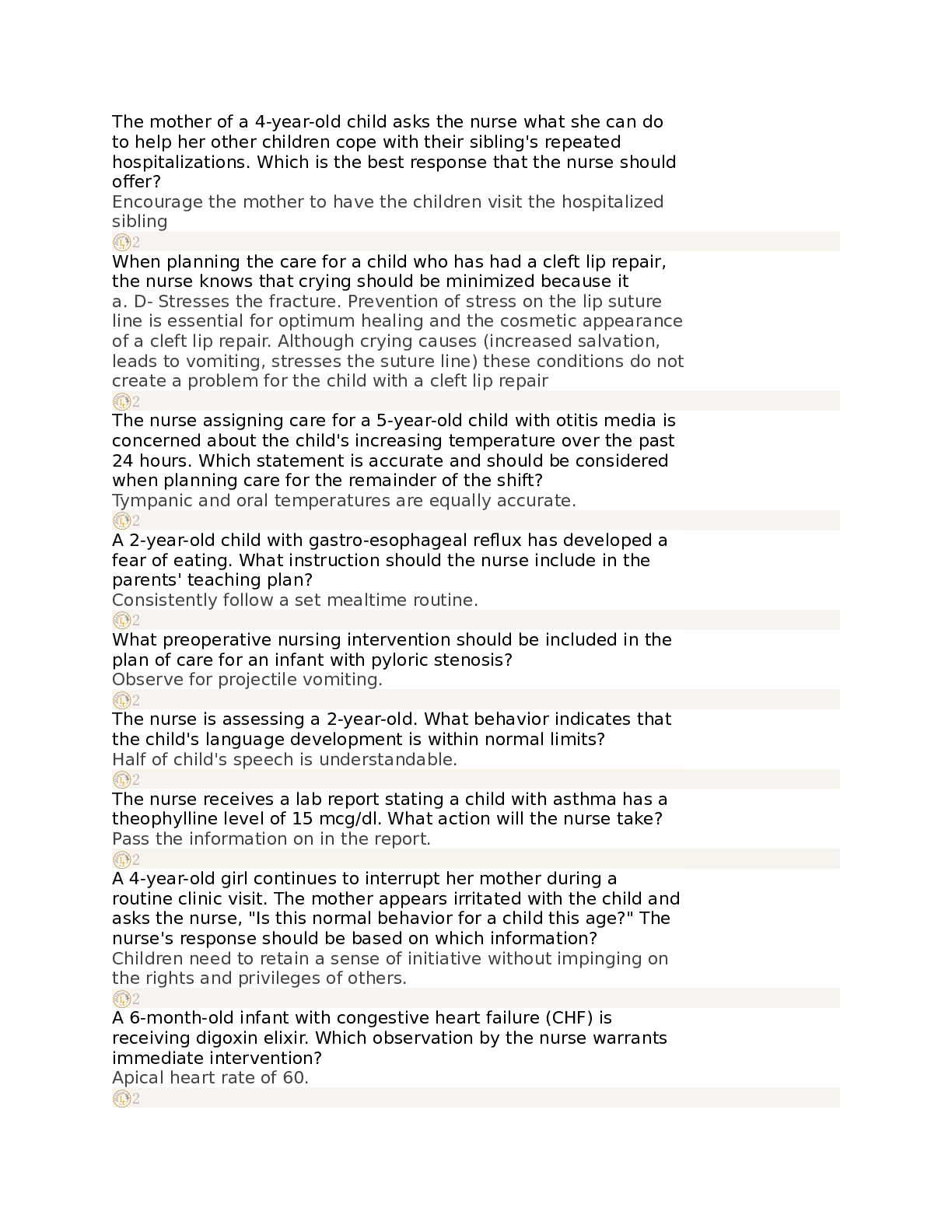
Buy this document to get the full access instantly
Instant Download Access after purchase
Buy NowInstant download
We Accept:

Reviews( 0 )
$9.00
Can't find what you want? Try our AI powered Search
Document information
Connected school, study & course
About the document
Uploaded On
Jun 04, 2021
Number of pages
22
Written in
Additional information
This document has been written for:
Uploaded
Jun 04, 2021
Downloads
0
Views
34






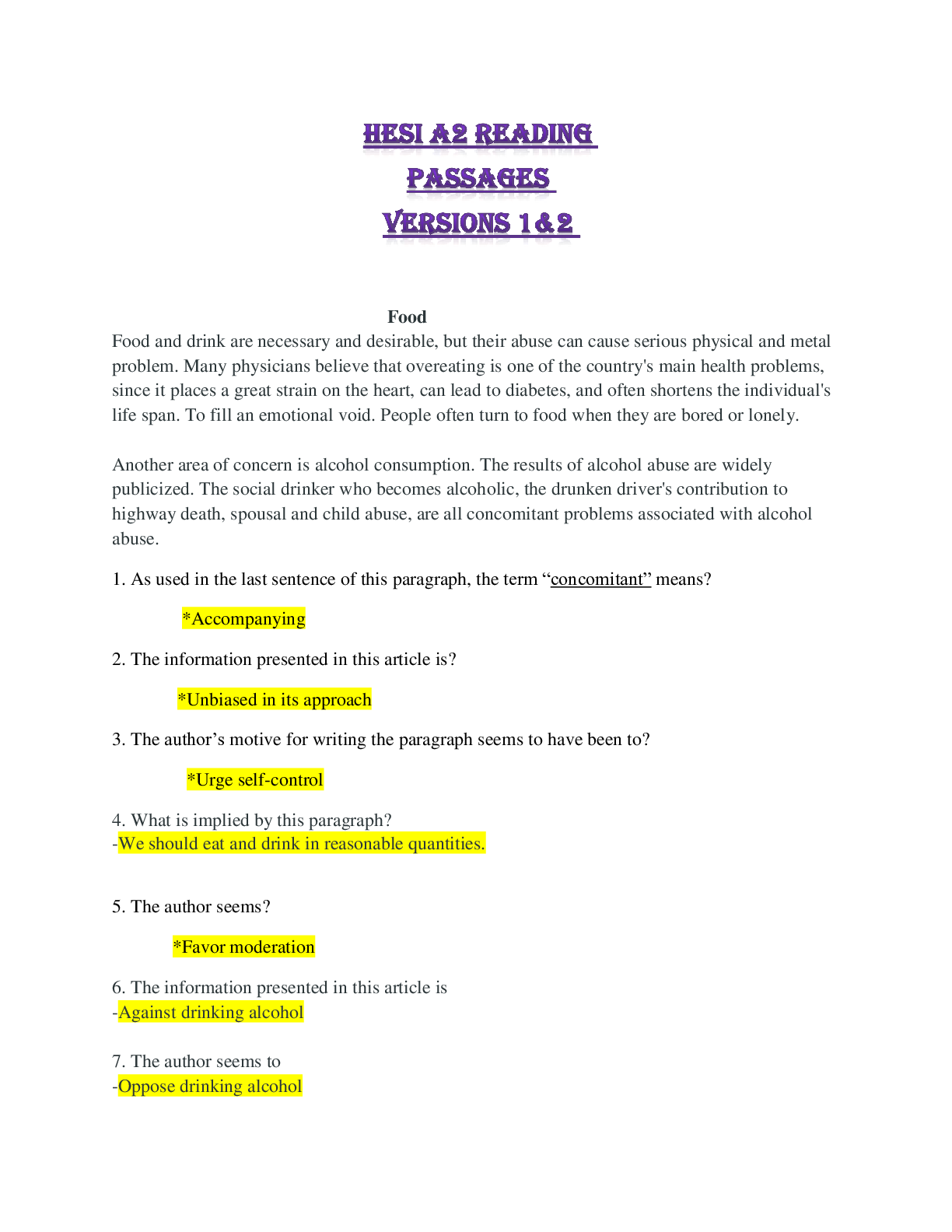
.png)
